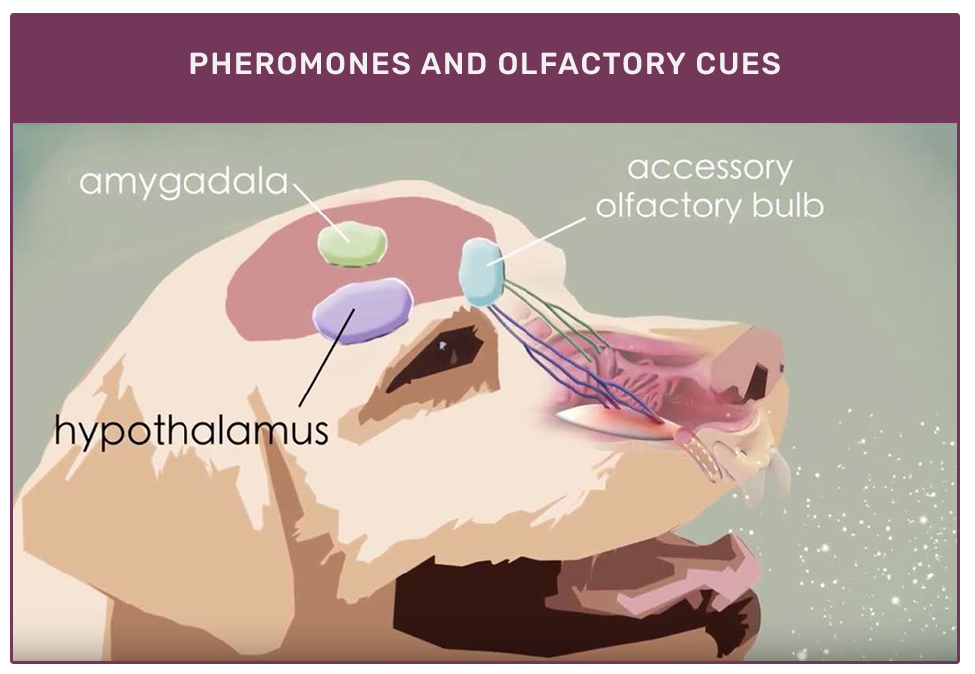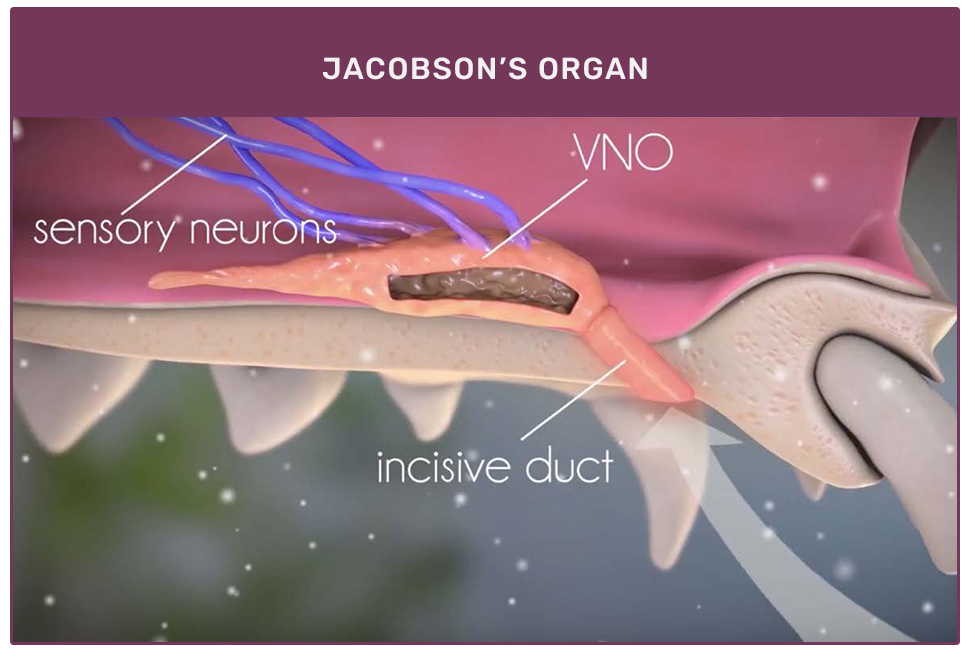Page17
PHEROMONES
Pheromones are different than smells but just as important in animal communication. Pheromones do not have a smell but are often encapsulated in substances that do have an odor, such as anal glands or urine. Pheromones evolved as a signal between organisms of the same species that elicit a particular reaction from the receiver. One important difference between pheromones and olfactory cues is that pheromones are innate cues which do not require learning and the response to pheromones is unlikely to be affected by learning or experience as is the response to olfactory cues.

When an animal is born, it is born having the genetically predetermined, physiological capability of responding to the pheromones that are appropriate to its species. When a cat is exposed to the feline appeasing pheromone, regardless of its age or experience with this pheromone, its response will be similar to any kitten when first exposed to the pheromone because the cat has inherited the receptors for perceiving that pheromone and experience is not required for it to recognize the pheromone.
Jacobson’s organ
The vomeronasal organ or VNO (also more commonly referred to as the Jacobson’s organ) plays a critical role in pheromones detection in dogs and cats. When animals perform the behavior known as flehmen, they are helping to open the duct to the VNO and to increase movement of molecules into the organ and across its receptors. The VNO lies above the oral cavity, in the hard palate. The entry point to the VNO is a duct that opens into the roof of the mouth. The inside of the organ is lined with nerve receptors. When a pheromone reaches these nerves it triggers a nervous transmission through the accessory olfactory bulb to the amygdala.

Pheromone messages are sent directly to the amygdala, the fear and emotional control center of the brain where they effect change on the animal via effects on the medial preoptic area and the hypothalamus. Click here to see the video about how pheromones work.

